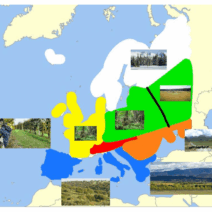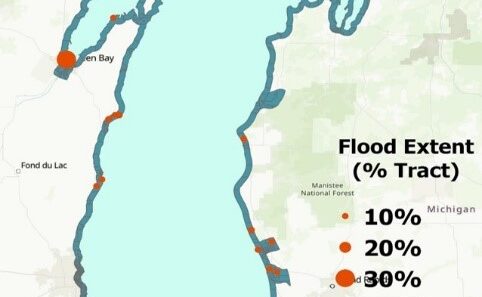The intricate relationship between human population dynamics and climate change has become increasingly pronounced in recent decades. As the global population burgeons, so do the challenges associated with environmental degradation and global warming. Humanity’s expanding footprint on the Earth’s ecosystems contributes significantly to greenhouse gas emissions, exacerbating climate change and creating a precarious future for life on our planet.
At the core of the population issue is the exponential growth of human numbers. Since 1950, the world’s population has more than tripled, surging from approximately 2.5 billion to over 7.9 billion. This rapid proliferation of inhabitants places immense pressure on the planet’s resources. It is essential to recognize that every additional person adds to the demand for food, water, energy, and waste, further straining an already fragile environment.
The consequences of population growth manifest in several ways, particularly through increased carbon emissions. Each person’s carbon footprint is influenced by their consumption patterns—what they eat, how they travel, and the types of homes they occupy. A burgeoning population ups the ante, as more people invariably lead to higher levels of consumption and, consequently, greater emissions. Industrial activities, transportation, agricultural expansion, and deforestation to accommodate growing populations collectively form a nexus that propels global warming.
Consider the agricultural sector—an undeniably critical component of sustaining a growing population. Crop production requires extensive land, water, and energy resources. Modern agricultural practices, while necessary to feed billions, often rely heavily on fossil fuels, thereby intensifying greenhouse gas emissions. Livestock farming, in particular, is notorious for emitting methane, a potent greenhouse gas with a warming potential far greater than carbon dioxide. As populations swell, so too do the demands for meat and dairy, perpetuating a vicious cycle of environmental impact.
Urbanization is another byproduct of surging populations. More individuals migrate to cities in search of livelihoods, leading to sprawling urban landscapes. These urban areas, densely populated and often poorly planned, become epicenters of pollution and resource depletion. Transportation systems choke on increased traffic, emitting trillions of tons of carbon dioxide annually. Furthermore, the construction and maintenance of urban infrastructure require significant energy, further propelling global warming.
Inextricably linked to population growth is the idea of sustainability. The burgeoning human population raises critical questions about sustainable living. As societies strive for progress, often fueled by consumption-driven economies, the environment suffers. The clash between economic development and environmental stewardship creates a dire need for innovative solutions and a shift in societal values. One such solution lies in sustainable practices that promote responsible consumption and energy efficiency.
Education, particularly in areas like family planning and reproductive health, emerges as a pivotal factor in curbing population growth. Empowering individuals, especially women, through education garners profound effects on birth rates. Informed choices lead to smaller family sizes and a decline in population growth rates. Studies demonstrate that higher education correlates with lower fertility rates, highlighting the necessity of promoting education as a means to address the population predicament.
Additionally, societal norms and cultural values play an imperative role in shaping attitudes toward family size. Regions with entrenched beliefs in large families may resist change, despite its perilous implications for the environment. Therefore, engaging in dialogues that transcend cultural barriers becomes essential for fostering an understanding of population issues and their environmental ramifications. Advocating for family planning and reproductive health not only alleviates pressure on resources but also champions human rights.
Changing consumption patterns is equally vital in mitigating the environmental impacts of population growth. The concept of ecological footprints—measuring individual consumption’s environmental impact—facilitates a clearer understanding of sustainability. Promoting minimalism, vegetarianism, and energy-efficient practices can significantly reduce the overall carbon footprint of individuals, especially in developed nations where consumption rates are disproportionately high. This shift in lifestyle choices underscores a broader imperative: that sustainability must become a part of our daily narrative, influencing decisions at both the individual and collective levels.
Additionally, technology presents an exciting frontier for addressing the challenges posed by human growth and climate change. Innovations in renewable energy, carbon capture, and sustainable agriculture possess the potential to transform how humanity interacts with the environment. For instance, solar and wind energy offer cleaner alternatives to traditional fossil fuels, while advances in vertical farming and aquaponics present solutions for feeding density-packed urban populations without further encroaching on natural ecosystems.
Nevertheless, the path towards a sustainable future remains fraught with barriers. Political will, economic disparities, and entrenched interests often obfuscate progress. It is incumbent upon global leaders to galvanize efforts toward addressing not only the symptoms but also the root causes of the population crisis. Implementing policies that incentivize sustainable practices and encourage a paradigm shift in how communities engage with their environment is critical.
Ultimately, understanding the population problem as a pivotal driver of climate change necessitates a multifaceted approach. It requires commitment from individuals, communities, and governments worldwide. Fostering a global consciousness that recognizes the interconnectedness of population growth and environmental sustainability is imperative. It is not merely about reducing numbers, but rather cultivating a sustainable relationship with the Earth that can support both humanity and the myriad of life forms with which we share this planet.
As the Earth continues to bear witness to the consequences of unchecked human growth, it becomes increasingly clear: we must recalibrate our approach to population and consumption. Only through collective action, innovative thinking, and unwavering commitment can we forge a path toward a sustainable, equitable future. The time to act is now; the stakes could not be higher.








